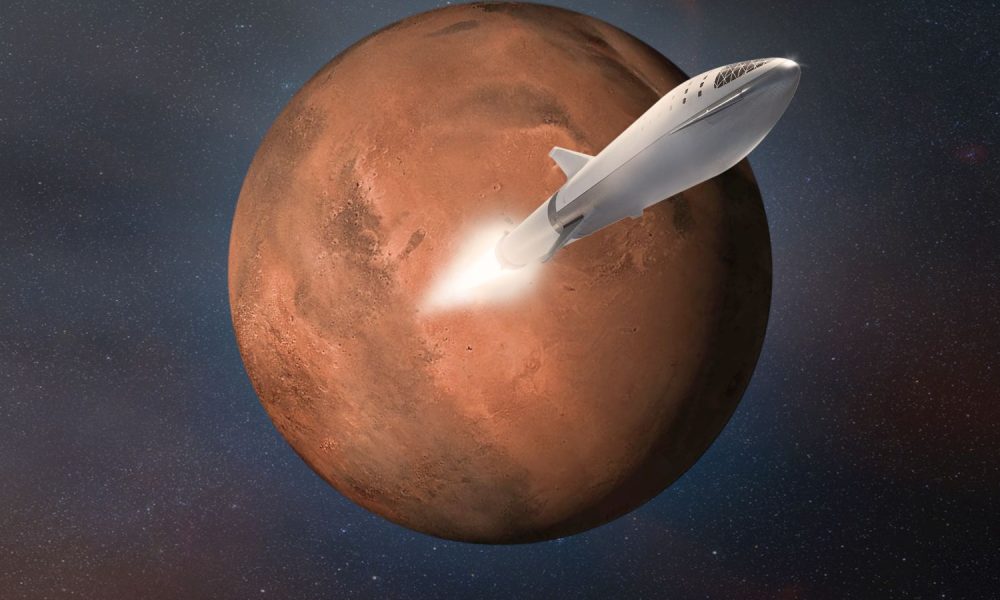
Travel time for Mars much shorter than previously thought? (Ki picture: FreePik, Paopano)
Oak Ridge/Columbus – researcher of the Oak Ridge National Laboratory (Ornl) develop materials and coatings for a rocket with nuclear drive. This could shorten the travel time to Mars from 6 to 9 to 1.5 months. According to the vision, uran atoms are split in the core reactor on board. The high temperature is transferred to hydrogen, which reaches a temperature of 2,300 degrees Celsius. It is then expelled in a huge gush.
Hydrogen difficult to tame
The effectiveness should be twice as high for the experts as with classic rocket drives, in which fuel is burned. In theory, such a rocket could also get a higher speed if it had enough fuel on board. But it is limited. If the rocket had too much on board, it would accelerate too slowly.
In contrast, hydrogen is extremely light, so that even large quantities in compressed form or liquefied would not increase the starting weight inadmissible. Hydrogen is also the lightest element, and its atoms and molecules are so small that they can slip – diffuse – they can slip through absolutely densely densely densely densely densely densely densely densely density.
To prevent this, containers that are tight. A material solution is also necessary for the nozzle through which the hot hydrogen flows. “Testing materials for exceptionally high temperatures is a first and crucial step to the NASA Supporting to develop and qualify rockets for manned space travel with nuclear thermal drive technology, ”says Ornl researcher Brandon Wilson.
Zirconium carbide as a coating
The team has already developed a technology with which fuel containers and reactor core materials are coated with zirconium carbide that protects these critical components without disturbing the operation of the reactor. In order to test this coating under the combined effects of high temperatures and high radiation, the experts have developed a special high -temperature furnace.
According to the ORNL scientists, this apparatus is designed for operation in a nuclear reactor. The reactor provides the radiation that starts in a nuclear checks from the bortractor. In this oven, a temperature of 2,200 degrees is reached within 5 minutes. This powerful unit is tested in the research reactor of the Ohio State University in Columbus.
Source: www.pressetext.com
(PTE004/09.04.2025/06: 15)
